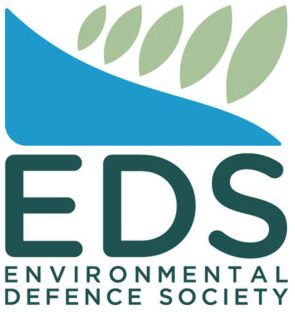Tunnel Boring Machine Breaks Through To Complete Watercare’s 16.2-kilometre Central Interceptor Tunnel


With a turn of the cutterhead, Hiwa-i-te-Rangi, Watercare’s giant Tunnel Boring Machine (TBM) created history today (28 March) breaking through into a shaft at Point Erin Reserve, Herne Bay to complete the 16.2-kilometre Central Interceptor wastewater tunnel running under Auckland.
Auckland Mayor Wayne Brown gave the order for the TBM to start up for the last time to finish the final few centimetres of her long journey since being launched from Māngere Wastewater Treatment Plant in July 2021.
The 200-metre-long TBM has travelled under Manukau Harbour, across the city and laid more than 10,000 rings to build New Zealand’s longest wastewater tunnel.
There were loud cheers from 250 guests who gathered around the 30-metre-deep shaft to watch the action as it was livestreamed onto a large screen. Slowly, the 5.2-metre diameter cutterhead emerged through billowing dust, chewing its way through the final centimetres of the concrete shaft wall—and into daylight.
Shayne Cunis, Watercare Chief Programme Delivery Officer says the breakthrough is a huge milestone and is testament to the skills of the tunnelling team provided by construction partners, Ghella Abergeldie Joint Venture: “The tunnellers have worked 24 hours per day, six days a week to build the tunnel. This is world class engineering, and it’s been completed safely, economically and on time, which is rare for any major infrastructure project.
“The TBM has been through ten shafts, but breakthroughs never get old, and we’ll always remember this final one. I am incredibly proud of the 600 staff who’ve worked on this project. This is a very special day.”
It’s the first time that Ghella, the 130-year-old Italian tunnelling arm of the joint venture has worked in New Zealand. Project Director, Francesco Saibene, says the Central Interceptor is the longest tunnel the company has built with a single Tunnel Boring Machine and rates highly among other international infrastructure projects due to the technical complexities involved: “We had a number of challenges to overcome including crossing the Manukau Harbour and tunnelling just 15-metres below the seabed, as well as tunnelling 110-metres deep below the Hillsborough Ridge, Mount Roskill.
“We did all this despite the Covid-19 pandemic, skills shortages of skills, hyperinflation and major storms. We are very proud of our team.”
Tunnel Boring Machines are traditionally given female names. School students along the tunnel route named her Hiwa-i-te-Rangi, after a Matariki star. She was built by Herrenknecht AG at their factory in Germany. Tunnelling has taken place 24-hours per day, six days per week. She has laid eight to 10 rings and travelled around 22-metres per day. The concrete rings are coated with a plastic liner to protect against the corrosive effects of wastewater, to ensure the tunnel lasts 100 years.
In coming weeks, Hiwa-i-te-Rangi will be removed from the shaft in sections. Thermal welding on tunnel segment joins will ensure the tunnel is air-tight and services such as locomotive tracks will be removed. Elsewhere, the tunnel will continue to be connected to the existing wastewater network.
Last month, the southern half of the tunnel from Blockhouse Bay south, went live. A new pump station at Māngere, sends combined stormwater and wastewater flows from the tunnel to the treatment plant for processing.
Once the project and associated work in Herne Bay will be completed in 2028, 80 per cent of wet weather overflows into streams along the tunnel catchment and improve water quality at beaches. It will also cater for future urban growth and create a more resilient wastewater network.
Earlier this week, Watercare published its 10-year Business Plan to deliver for Auckland. It shows that as the Central Interceptor project successfully winds down, two other mega-programmes of work will get underway. Chief executive Dave Chambers explains:
“In west Auckland, we will replace the ageing Huia Water Treatment Plant with a plant that can produce up to 160 million litres a day to improve system resilience. As part of this project, we will replace two watermains that convey water from the dams to the plant and we will build two large storage reservoirs.
“Our other largest area of investment is the Māngere Wastewater Treatment Plant which serves three-quarters of Auckland’s population. We will upgrade equipment and improve processes to ensure we can continue to meet strict discharge requirements protecting the Manukau Harbour.”
Chambers is quick to note that all of Auckland will benefit from investment: “With dozens of treatment plants, hundreds of pump stations and thousands of kilometres of pipes, we must maintain assets from as far south as Waiuku to as far north as Wellsford. Over the next 10 years, we will be working in every community.”


 Transpower: Major Electricity Development For Western Bay Of Plenty A Step Closer
Transpower: Major Electricity Development For Western Bay Of Plenty A Step Closer Alcohol Beverages Council: Turning The Tide - New Zealanders Unite To Curb Harmful Drinking
Alcohol Beverages Council: Turning The Tide - New Zealanders Unite To Curb Harmful Drinking University of Auckland Business School: Economists Urge Action To Prevent ‘AI Poverty Traps’
University of Auckland Business School: Economists Urge Action To Prevent ‘AI Poverty Traps’ Bill Bennett: Australian warship takes rural fixed wireless broadband offline
Bill Bennett: Australian warship takes rural fixed wireless broadband offline NZ Telecommunications Forum - TCF: New Zealand Is Saying Goodbye To 3G: Are You Ready For The Change?
NZ Telecommunications Forum - TCF: New Zealand Is Saying Goodbye To 3G: Are You Ready For The Change? NZ Post: Mānawatia A Matariki - NZ Post Stamps Look To The Stars Ahead Of The Māori New Year
NZ Post: Mānawatia A Matariki - NZ Post Stamps Look To The Stars Ahead Of The Māori New Year


